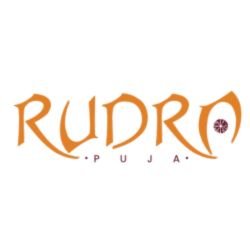Homa or Havan
is fire worship. Fire is visible divine energy that can be seen and felt and is said to be mediator between humans and gods .Havan is performed to please Subgods. The mediator between these gods and the Subgods and human beings is the fire god. So the gift to these gods is the emotion on which they survive and it is offered to them through fire worship.
God performs many kinds of functions, he is known by many names, for performing each job, he has to shape to himself into different form i.e there appear so many gods, but the sadhak knows that all the names are his name and all the forms are his form.
When he creates, he is called Brahma, he preserves, he is called Vishnu, he destroys he is called Shiva. When he brings forth energy of heat and light he is called Sun.
This division of jobs creates many sides, many names forms of God. These gods are not the supreme, but one aspect of the supreme so they are less in power. Supreme is Omnipotent and Brahma is one little part of him as Creator, Vishnu is one little part of him as preserver and Shiva is one part of him as destroyer.
Brahma, Vishnu and Shiva are three main rays of his light. Then there are other energies through which three work, They are called Sub gods. Indra, King of gods of heaven, is responsible for rain. Varun is god of water, Kuber is god of wealth, Agni is god of fire, Pavan is god of forty-nine types of air. Prajapati is the creator, Vishwakarma is the god of crafts.
Purpose and Process of Homa
Kund
Homa is performed in Kund. This Kund should be made according to amount of fire to be created and if big logs of wood are being used, the Kund will be big.
For normal homa the aspirant should measure the place with the hands. The kund is usually like an inverted pyramid, narrow at the bottom and broad on the top. The bottom part should be a square of about twelve finger with of the one performing the homa. The top should be one and half times the bottom. It is best if the kund is made by digging an inverted pyramid like opening in the ground keeping the bottom narrow and top broad. Then a vedi (fireplace) is made by raising the level of the kund above the ground with bricks.
Fuel
Wood to be used as fuel for the wire worship must come from certain prescribed trees. If no mention of wood is made, one can take any wood that burns easily without creating much smoke. In india the wood from a mango tree is most often used. Pine wood or other oily woods should be used only when mango wood or any other oil free burning wood is not available.
Samigri
Samigri means material. The material used in homa or havan is known as havan samigri. This samigri is a combination of thirty six herbs. It purifies the atmosphere and smells very good like incense. In India the herbs are available in the market. One Should add some ghee and powdered raw sugar to the samigri.
Ghee
Clarified butter or ghee is available in Indian food stores. Ghee made from Clarified cow butter should be used in homa- not the ghee made from vegetable oils.
Ahuti
Ahuti is the offering to the fire, Ahuti can be given by pouring a small spoonful of ghee into the Kund where the fire has been lit or it can be given by pouring a small amount of samigri into the kund. The one giving ahuti of samigri should thus hold the samigri in the right hand, keeping the index and little fingers apart.
When the homa is performed, the content present in the samigri are burned and get converted into gaseous form of smell, the smell mixes in the atmosphere, the same atmospheric air enters the breath of the one doing the homa and those who are in the vicinity. This air contains all the chemicals of the herbs in gaseous form and thus these chemicals go to the gods that are present as different energies or abilities inside the human organism. These chemical influence the body chemistry and bring about the desired effect.
For any furthur details you can write to us on info@rudrapuja.com or you can visit our website
www.rudrapuja.com


